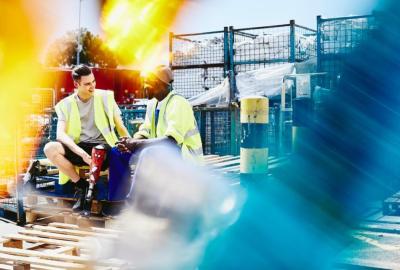Immigration. There, I said it. The word has become so loaded recently that talking about it can be seen as controversial and risque. It was one of the reasons voters turned their back on the European Union last year, to “take back control”, we were told, but the truth is immigration was a talking point long before June 23 and it continues to be one.
The impact of immigration is all around us: in the news, our hospitals and, as I have seen first hand, the nation’s construction sites. It was in the headlines again this week after the Office for National Statistics released data showing net migration to these shores was at its lowest in two years - in the last year, net migration dropped by almost 50,000 to 273,000.
Brexiters might see these figures and shout hooray! But this is a wider issue than political point scoring and if affects construction.
At the last time of counting, more than 100,000 construction workers out of a 2.1m workforce were born elsewhere in the EU. Overall, 8% of the industry consists of foreign-born workers and when you take a look at cities that proportion explodes: in London more than half of construction workers were born outside the UK.
These men and women - regardless of where they were born - play a vital role in keeping sites from stuttering and the entire sector ticking. But as the data suggests, more foreign workers are heading home and fewer are heading to the UK. We've already seen signs of it ourselves. Last year, following the Brexit vote, dozens of Lithuanians failed to return to work.
The importance of a strong and sustainable construction workforce will become more apparent over the coming years once mega-projects currently in the pipeline like High Speed 2, a third runway at Heathrow and London Underground extensions get underway.
There’s also the issue of house building. The country needs to build 22 homes an hour if we are to hit the government’s target of 1m new ones by 2020. It’s an ambitious target and so far we’re falling short. Shedding workers is not going to plug this gap.
For targets to be realised we need an industry firing on all cylinders and that’s why retaining workers is as important as recruiting new ones to fill the skills shortage facing construction.
A Rics survey found 56% of respondents thought skills shortages were hampering growth while Randstad’s Age of Housebuilding reportconcluded we need an extra one million builders by 2020 in roles from labourers and carpenters to architects, plasterers and floorers.

Now is not the time to be losing valuable workers



